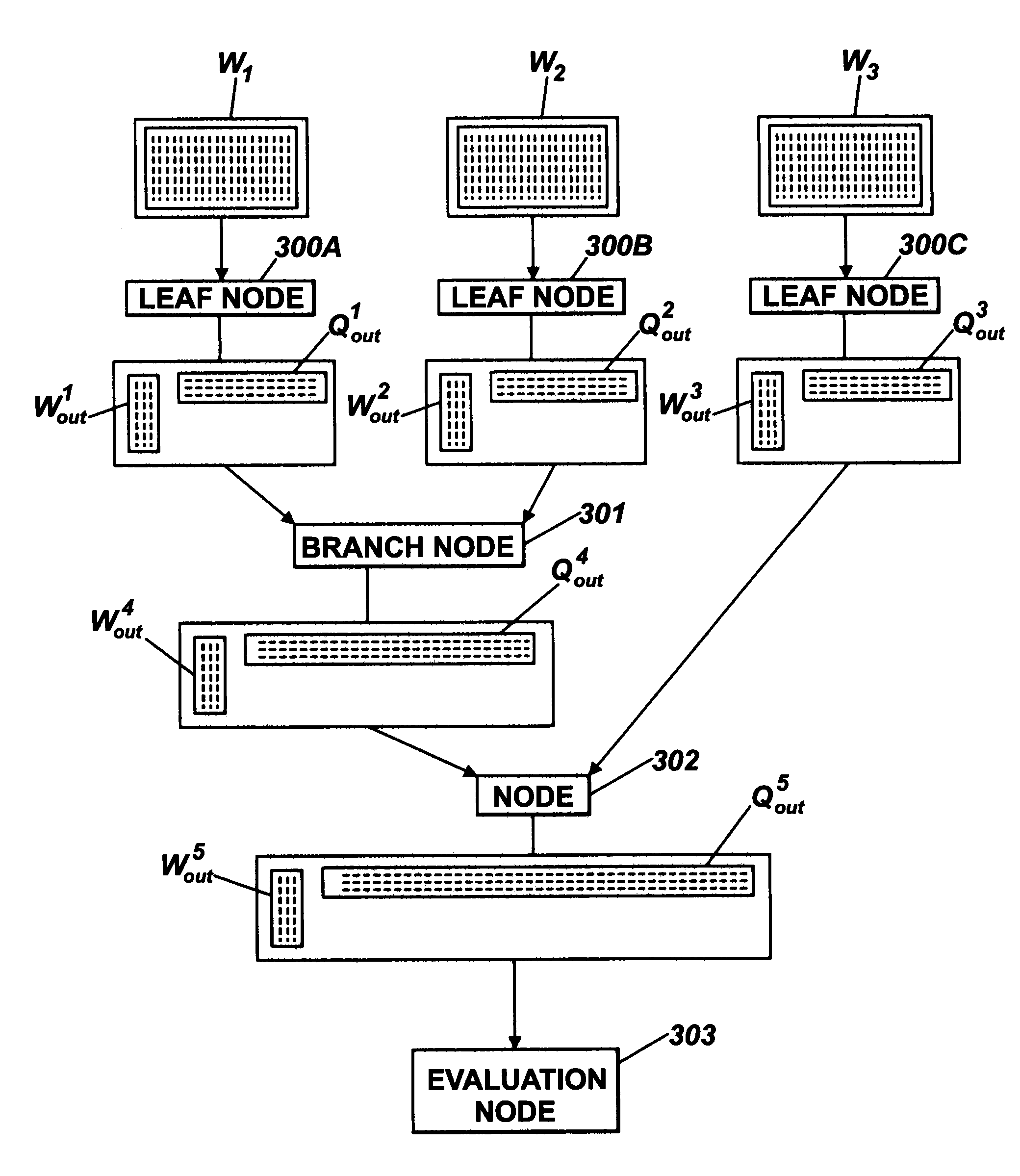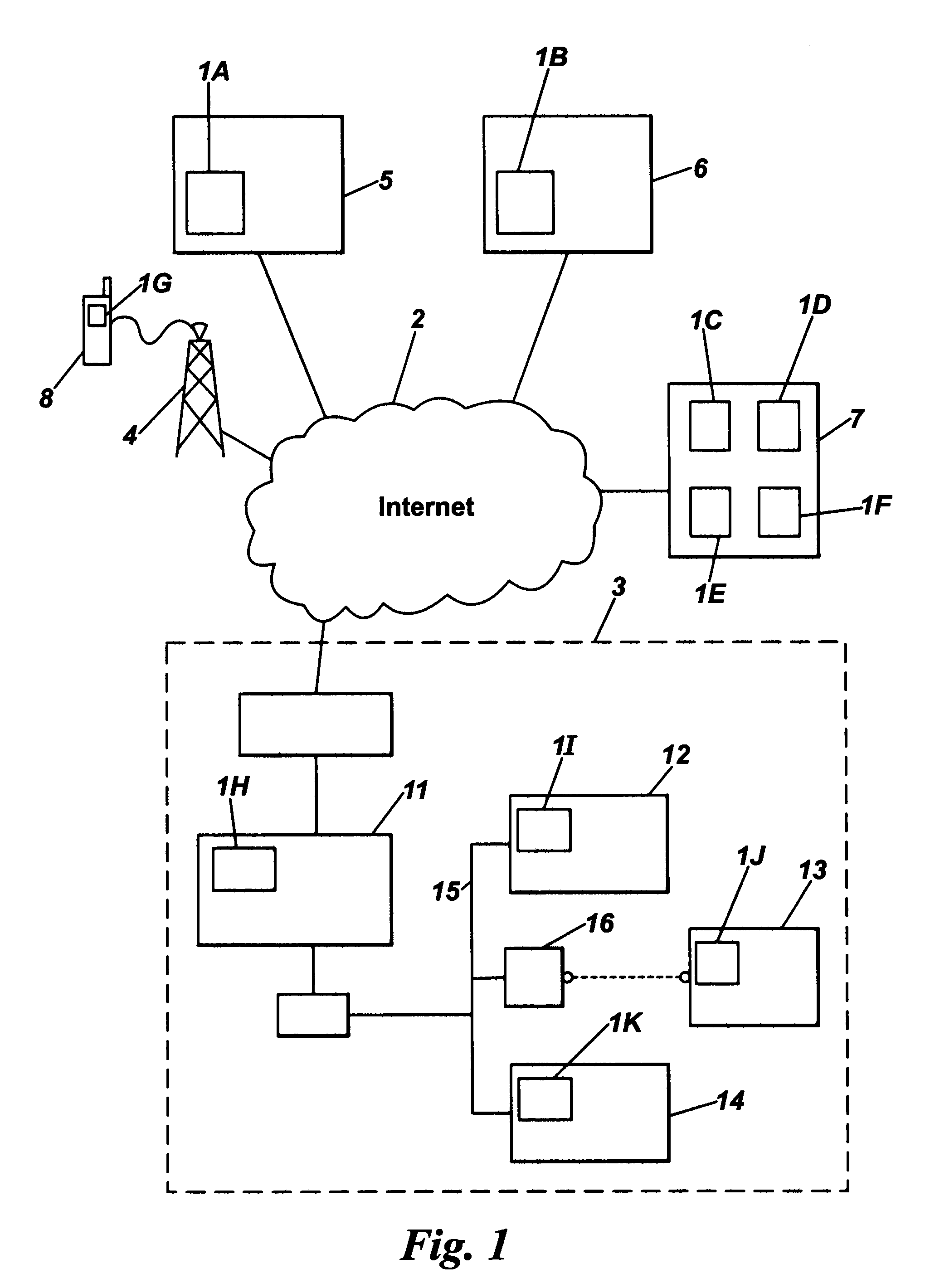Parallel Processing
a technology of parallel processing and data, applied in the field of parallel processing, can solve the problems of large application size, high computational cost of existing methods, and inability to extend well the previous methods of computing an svd of data spanning multiple resources, so as to speed up the overall computation, reduce communication delays, and avoid the complexities of handling many nested data structures
- Summary
- Abstract
- Description
- Claims
- Application Information
AI Technical Summary
Benefits of technology
Problems solved by technology
Method used
Image
Examples
Embodiment Construction
[0059]The invention concerns a system that is capable of calculating (approximating) leading vectors of a singular value decomposition (SVD) of a matrix, A, that can be interpreted as representing a linear map from Rn to Rm.
[0060]Referring to FIG. 1, in one embodiment, the system may comprise a network of processors 1A to 1K connected across networks 2, 3 and 4. In the embodiment shown, the system comprises individual computers 5, 6 and 7, computer 7 comprising multiple processors, a local area network 3 and a telecommunications network 4 connected to each other via the Internet 2. Telecommunications network 4 comprises telephone devices 8, such as mobile telephones, and LAN 3 comprises server 11 and computers 12 to 14 connected to the server 11 via cables 15 or wireless devices 16.
[0061]The computers 5 to 7, 12 to 14, telephone devices 8 and server 11 comprise processors 1A to 1K. Each processor 1A to 1K is capable of acting as a node within the system. One of the nodes, in this ca...
PUM
 Login to View More
Login to View More Abstract
Description
Claims
Application Information
 Login to View More
Login to View More - R&D
- Intellectual Property
- Life Sciences
- Materials
- Tech Scout
- Unparalleled Data Quality
- Higher Quality Content
- 60% Fewer Hallucinations
Browse by: Latest US Patents, China's latest patents, Technical Efficacy Thesaurus, Application Domain, Technology Topic, Popular Technical Reports.
© 2025 PatSnap. All rights reserved.Legal|Privacy policy|Modern Slavery Act Transparency Statement|Sitemap|About US| Contact US: help@patsnap.com



